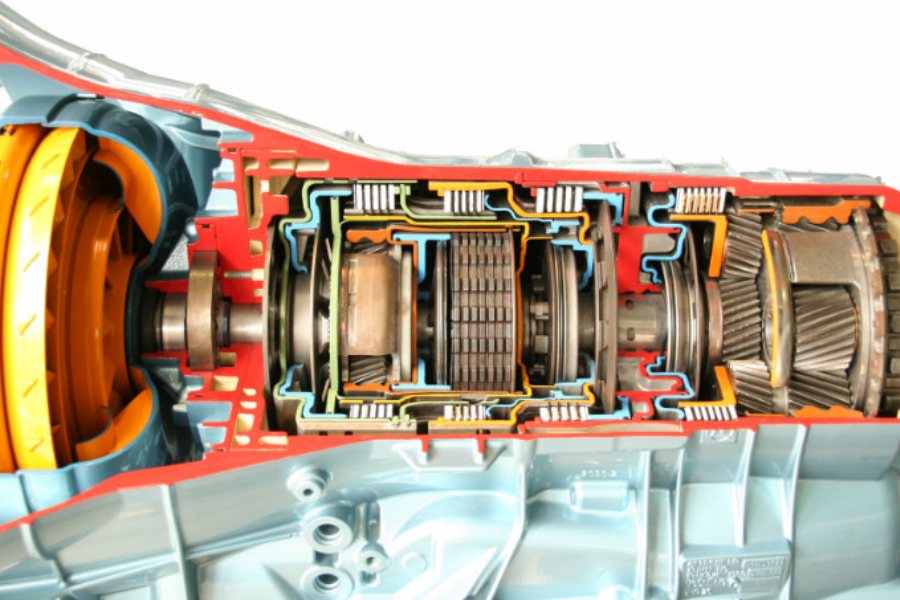Introduction
If you’ve been exploring automotive transmission systems, you’re likely familiar with the ZF 6HP Generation 2 Solenoid Diagram transmission. This transmission is known for its durability and excellent performance, widely used in various vehicles. However, like any mechanical system, issues can arise, particularly with its solenoids. These small but vital components ensure smooth gear shifts and optimal transmission performance.
Imagine cruising smoothly, only to feel your car hesitate or jerk. More often than not, faulty solenoids are to blame for such irregularities. Understanding how these components function is essential for diagnosing and maintaining your transmission. In this guide, we’ll dive deep into the workings of the solenoids within the ZF 6HP Generation 2 Solenoid Diagram , offering insights for both seasoned mechanics and DIY enthusiasts. Let’s embark on this journey to unravel the intricacies of solenoid diagrams and learn how to keep your transmission running smoothly!
Understanding Solenoids and Their Role in Transmission Systems
Solenoids play a key role in the operation of automatic transmissions, such as the ZF 6HP Generation 2 Solenoid Diagram. These electro-mechanical devices control the flow of transmission fluid, which directly influences gear shifts and overall vehicle performance.
When electrical current flows through the solenoid’s coil, it creates a magnetic field that either activates or deactivates specific transmission components. This precise control is essential in determining how power from the engine is transferred to the wheels.
In essence, solenoids are like valves, managing the hydraulic pressure needed for seamless gear changes. If a solenoid malfunctions, shifting can become erratic or rough, which could lead to more significant transmission problems if left unaddressed. Understanding the role of these components is vital for maintaining a smooth driving experience.
Types of Solenoids in the ZF 6HP Generation 2 Transmission
The ZF 6HP Generation 2 Solenoid Diagram transmission relies on various types of solenoids, each playing a distinct part in its overall functionality.
One critical component is the pressure control solenoid, which regulates hydraulic pressure to ensure smooth, timely gear shifts based on engine load and speed. This solenoid continuously adjusts to provide optimal transmission performance.
Another essential solenoid type is the shift solenoid, which controls the engagement of clutches and brakes within the transmission. By enabling precise gear shifts, the shift solenoid enhances both performance and driving comfort.
Finally, the torque converter lock-up solenoid improves fuel efficiency during high-speed driving by locking the converter at specific speeds. This reduces engine strain and enhances overall efficiency. Familiarity with these solenoids can help in diagnosing and addressing transmission issues more effectively.
How to Interpret a ZF 6HP Generation 2 Solenoid Diagram
Reading a solenoid diagram for the ZF 6HP Generation 2 Solenoid Diagram transmission may seem complicated, but with a basic understanding of the symbols and layout, it becomes easier.
Start by identifying the key components labeled on the diagram. Each solenoid—whether it’s for shifting, pressure control, or torque converter lock-up—should be clearly marked. Next, focus on the wiring connections, represented by lines that indicate how electrical current flows through each solenoid. Understanding these pathways is crucial for troubleshooting potential issues.
Pay attention to any color coding or symbols that may indicate different functions or operational states. Also, refer to any accompanying notes or legends within the diagram for additional clarity. Mastering the art of reading these diagrams will significantly improve your ability to maintain and repair your vehicle’s transmission.
Common Solenoid Issues and How to Troubleshoot Them
Problems with solenoids in the ZF 6HP Generation 2 Solenoid Diagram transmission often manifest in delayed or erratic shifting. If you notice your car hesitating or jerking during gear changes, it could signal a solenoid malfunction. Rough or harsh shifts are another common symptom, often caused by solenoids failing to regulate hydraulic pressure properly.
Dashboard warning lights related to transmission performance can also indicate solenoid issues, so don’t ignore them. Additionally, unusual sounds such as grinding or whining could be a sign of a problem with the solenoids or their connections.
To diagnose solenoid issues accurately, use an OBD-II scanner to read any error codes associated with the transmission. This diagnostic tool can provide valuable information to help pinpoint the problem before it escalates.
Tips for Maintaining and Replacing Solenoids in the ZF 6HP Generation 2 Transmission
Proper maintenance of the solenoids in your ZF 6HP Generation 2 Solenoid Diagram transmission is essential for ensuring long-term performance. Regularly inspect the solenoids for wear, corrosion, or leaks. Addressing these issues early can prevent more significant problems down the road.
When replacing a solenoid, always opt for OEM (Original Equipment Manufacturer) parts to ensure compatibility and quality. Before installation, thoroughly clean the area to prevent debris from interfering with the solenoid’s function.
During reassembly, follow the correct torque specifications to avoid damage. Over-tightening can crack components, while under-tightening may cause leaks.
After replacing a solenoid, monitor your vehicle’s performance closely. If any unusual behavior occurs, address it promptly to prevent further damage. When in doubt, seek professional help, as the intricacies of the transmission system may require specialized knowledge and tools.
FAQs:
What is the purpose of solenoids in the ZF 6HP Generation 2 transmission?
Solenoids in this transmission control the flow of hydraulic fluid, which ensures smooth gear shifts and regulates pressure for optimal transmission performance.
How can I tell if my solenoids are malfunctioning?
Common signs include delayed or erratic gear shifts, dashboard warning lights related to transmission issues, harsh shifting, and unusual sounds like grinding or whining during operation.
Can I replace the solenoids myself, or should I seek professional help?
If you’re comfortable with automotive repairs, replacing solenoids can be a DIY task. However, due to the complexity of the transmission system, many recommend seeking professional assistance for accurate diagnosis and installation.
Are there different types of solenoids in the ZF 6HP Generation 2 transmission?
Yes, there are several types, including pressure control solenoids, shift solenoids, and torque converter lock-up solenoids, each with distinct functions for ensuring the smooth operation of the transmission.
What tools do I need to read a ZF 6HP solenoid diagram?
You’ll need basic knowledge of electrical diagrams and a wiring chart. Tools like an OBD-II scanner can also help in diagnosing solenoid-related issues.
How do I interpret a ZF 6HP solenoid diagram?
Start by identifying the labeled solenoids, and then trace the electrical pathways. Color coding and symbols indicate different functions and help in understanding the connections between solenoids and other transmission components.
What should I do if my transmission is shifting roughly?
Rough shifting could be a sign of a faulty solenoid. You should perform a diagnostic scan to check for error codes and inspect the solenoids for any visible wear or damage.
What is the best maintenance practice for ZF 6HP solenoids?
Regular inspection for wear and tear, checking for fluid leaks, and ensuring solenoid connections are clean and intact are essential for maintaining optimal solenoid performance.
Can I use aftermarket solenoids for replacement?
While aftermarket solenoids are available, it’s recommended to use OEM parts to ensure compatibility and longevity.
Why is my transmission making a whining noise?
A whining noise can indicate issues with the solenoids or the transmission’s hydraulic system, such as a blockage or fluid pressure imbalance.
Conclusion:
Solenoids play a critical role in the efficient operation of the ZF 6HP Generation 2 transmission, ensuring smooth gear transitions and optimal performance. Recognizing common issues such as delayed shifts, harsh transitions, or dashboard warnings can be your first step in diagnosing solenoid problems. Regular maintenance and the use of proper parts during replacements are essential for keeping your transmission in top condition.
By learning how to read and interpret the solenoid diagram, whether you’re a professional or a DIY enthusiast, you gain invaluable insight into how the transmission operates. Troubleshooting solenoid-related issues early can save you from more costly repairs down the line, keeping your vehicle running smoothly and efficiently. Understanding the importance of these small but powerful components is key to a reliable and well-maintained transmission system.





